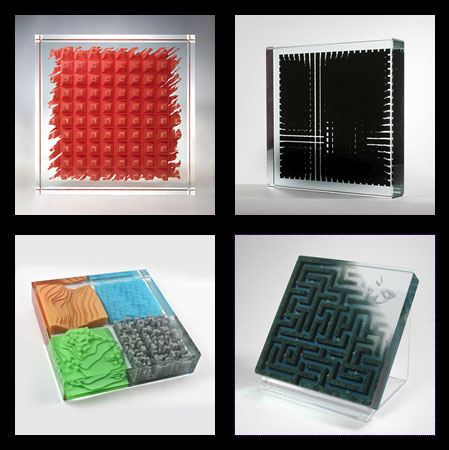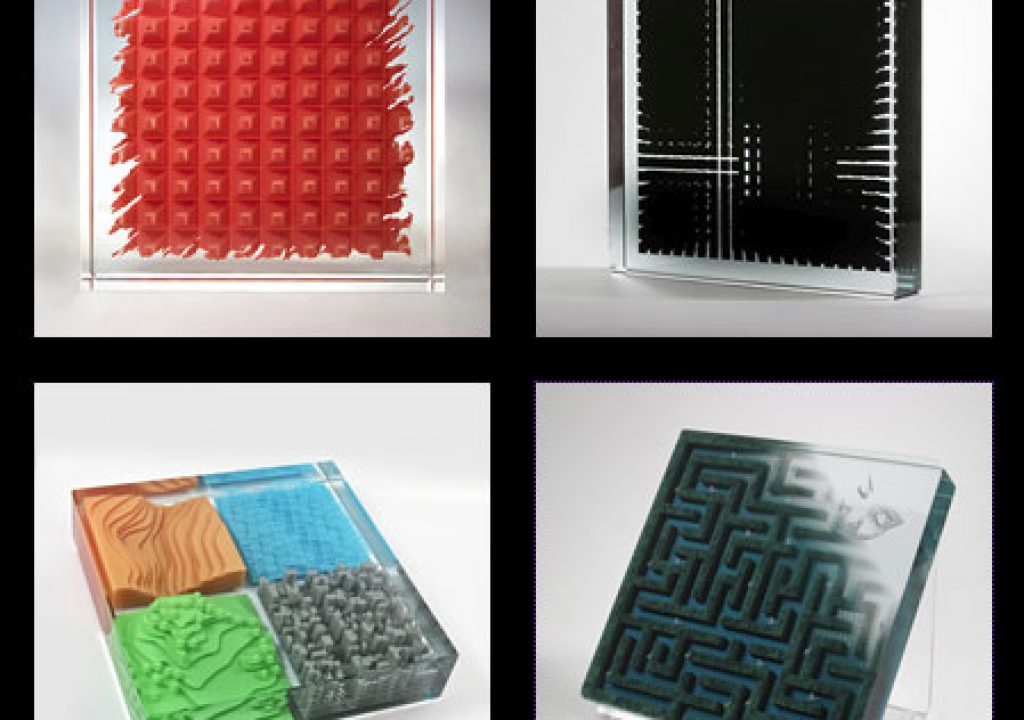
Ira Tiffen has transitioned from forging glass filters to casting attention-grabbing artwork.
When I last spoke to him, for an article I wrote last year about filtration, he was semi-retired and working on a book that would have been the ultimate filtration reference for the motion picture industry. Yesterday I sent him an email asking how the book was coming along. His response was a case of “good news/bad news.” He’d stopped work on the filter book in order to focus on his newest passion: works of art cast in glass.
From his web site:
I create my graphic elements in the computer. I then output them to high contrast film positives, which are transferred to ‘silk’ screens for printing. Mixing the colors myself from an array of special thermoset epoxy inks, the patterns are printed and baked directly onto the surface of the various glass plates that will make up the finished piece.
Each graphic layer represents what I want to appear at that depth within the volume of glass that I create when I then laminate all of the plates together, keeping the graphics closely in register, using an optically clear epoxy resin. One of the important aspects of this resin is that it’s refractive index, or the relative measure of how it bends light that passes through it, is a very close match to that of the low-iron, ‘water white’ glass that I use. The result is a solid block of laminated plates that appears as if it is, in fact, made of one solid chunk of glass. The only telltale signs are the laminate lines around the perimeter indicating where each plate surface meets the next.
My method of positioning two-dimensional graphic elements within the three-dimensional volume of glass afforded by my assembly technique, allows me to create visual effects that are difficult, if not impossible, to achieve otherwise.
I can alter transparency of the ‘material;’ I can create a gradual fade in or out of solidity; I can visually place elements inside other elements that would, physically, have no way of happening; I can create delicate fragments of structure that would never hold together in full three dimensional solid form; I can generate dynamic moir© and interference pattern effects, that can cause light to pulsate and flow. And more…after many years of thinking toward what I am now actually doing, I know that I am just getting started…
Ira is very generous with his knowledge and is one of the nicest people you’d ever care to meet. I’m thrilled that he’s taking 40 years of accumulated craft knowledge and putting it into works of self-expression. HIs web site will be well worth watching.

Filmtools
Filmmakers go-to destination for pre-production, production & post production equipment!
Shop Now













